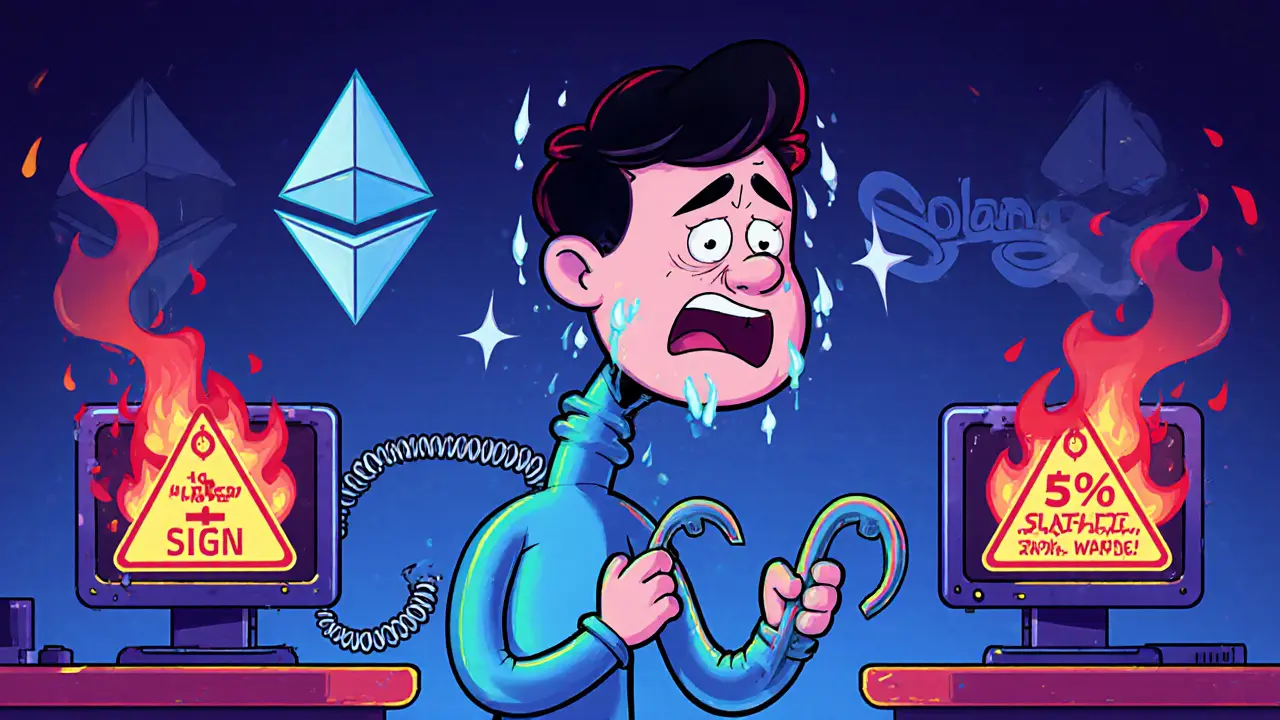Slashing Protection: What It Is and Why It Matters for Stakers
When you stake crypto using Proof of Stake, a consensus model where users lock up coins to help secure a blockchain. Also known as PoS, it rewards you for helping validate transactions—but it also risks slashing, a penalty where part of your staked funds are automatically destroyed if you or your validator acts maliciously or goes offline. Without slashing protection, a safety feature offered by some staking platforms to shield users from losing funds due to validator errors. you’re on your own. And in a system where one mistake can cost you hundreds or thousands, that’s not a gamble most people should take.
Slashing doesn’t happen because you clicked the wrong button. It happens because the node you delegated your stake to—whether it’s a solo validator, a pool, or a service like Coinbase or Lido—fails to follow the rules. Maybe it signed two blocks at the same height. Maybe it went offline for too long. Maybe its software had a bug. The blockchain doesn’t care why. It sees a violation and punishes the validator. And if you’re staked with them, you get hit too. That’s why slashing protection exists. It’s not magic. It’s insurance. Some platforms cover the penalty themselves. Others use insurance funds. A few even refund you automatically if your stake gets slashed. But not all do. And most don’t tell you upfront whether they offer it.
When you choose where to stake, you’re not just picking the highest APY. You’re picking who’s responsible for your money’s safety. Platforms that offer slashing protection usually have better infrastructure, more experienced teams, and clearer documentation. They also tend to be more transparent about how they manage validators. If a service says "10% returns" but won’t say whether slashing protection is included, that’s a red flag. You’re trading security for yield—and that’s never a fair trade in crypto. The top PoS chains like Ethereum, Solana, and Cardano all have slashing rules built in. But the protection around them? That’s up to the service you use.
Slashing protection doesn’t mean you’re immune to loss. If the whole network crashes, or if you get hacked, or if you send your keys to a scam site—none of that is covered. But when it comes to the technical risks of staking—the kind you can’t control—slashing protection is the one thing that separates a safe staking experience from a risky one. And in a world where people lose life savings to simple mistakes, that difference matters more than ever.
Below, you’ll find real-world examples of how slashing has impacted users, which platforms actually offer protection, and what to look for before you lock up your coins. No fluff. Just what you need to stake without worrying about losing it to a glitch you didn’t cause.
Learn how to prevent slashing in Proof-of-Stake blockchains by avoiding duplicate validator keys, using secure signers, and understanding downtime penalties. Protect your staked assets with proven best practices.
